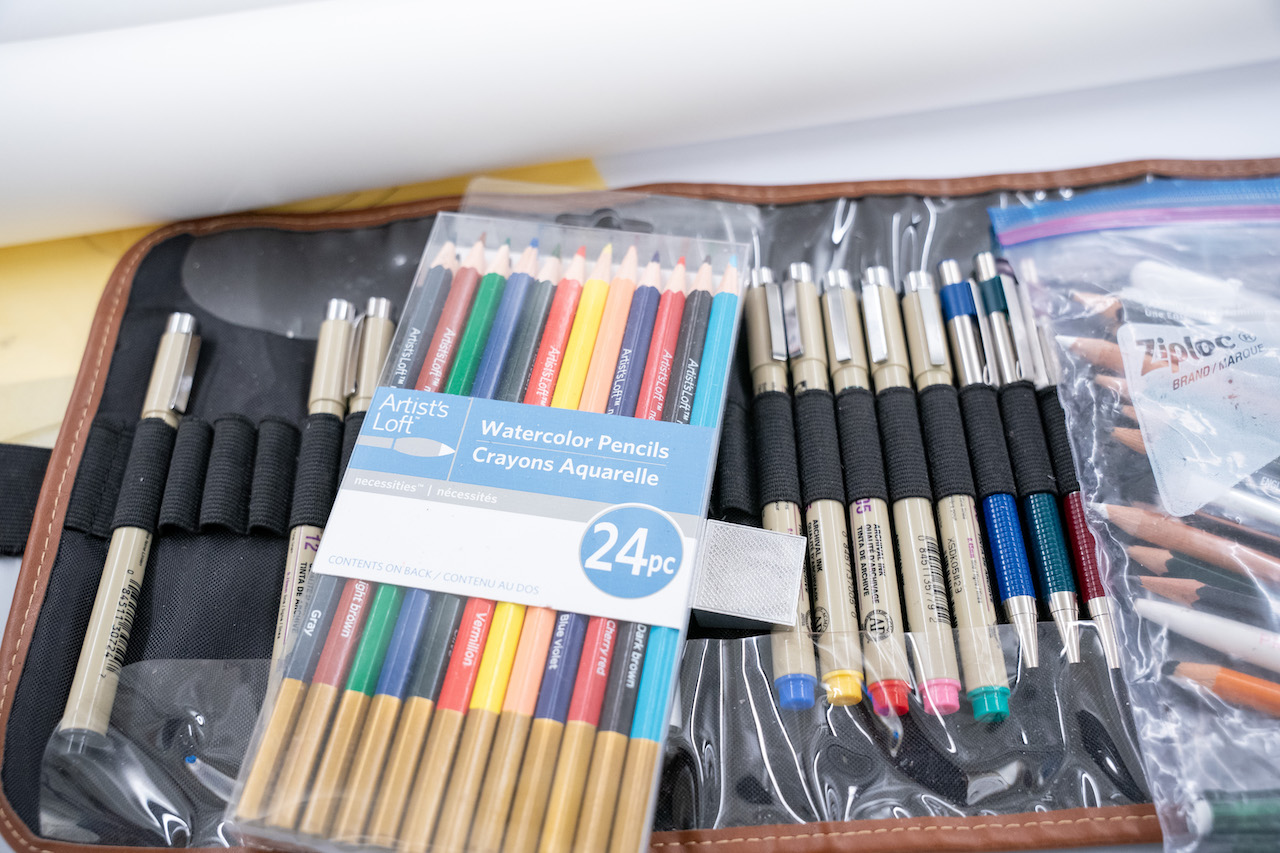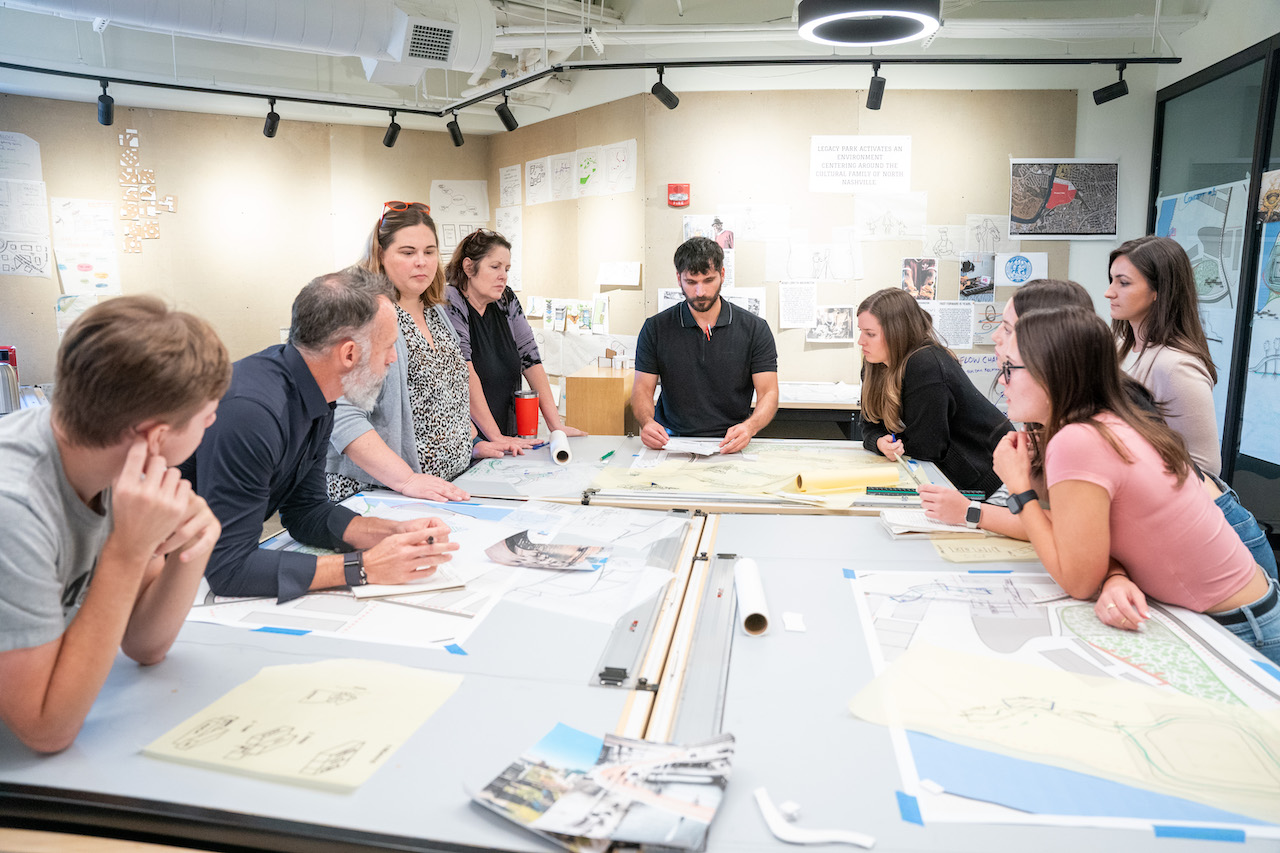Exploring the Core Curriculum: Courses You'll Have to Take to Earn an Interior Design Degree
Accredited interior design degree programs introduce students to the fundamentals of architecture, design, color coordination and more so they can develop and design visually pleasing and functional spaces. Explore these courses and learn the benefits of attending an accredited interior design program.
Interior design curricula vary across schools, but here are some courses aspiring designers should expect to take to earn an interior design degree:
History of Interior Design/Architecture
History plays a vital role in 21st-century interior design, and it's one of the courses you will need to earn an interior design degree. Expect to explore and analyze different architecture, art and design eras.
Interior design history traces back thousands of years, so there's much to study. History courses are often divided into distinct parts. For example, Belmont University's interior design degree programs include three history courses. Interior Design History I covers antiquity to 1700, while II exposes students to interior design from 1750 to 1900. The third history course is about interior design from 1900 to the present.
Over the years, some students entering the design world through a BFA in interior design have had the impression that history classes are a waste of time. However, these courses will be useful in developing design concepts with context and tackling projects from various perspectives.
Design Theory and Application
Design theory is the cornerstone of interior design. It guides the design process from conceptualization to execution and gives designers the tools and principles necessary to create interior designs that are not just beautiful but also functional, impactful and meaningful.
Interior design programs expose students to these theoretical concepts and the overarching motivations of designers to create spaces for many applications.

Photo: Sam Simpkins
Materials
Materials play a crucial role in interior design, affecting a space’s functionality, sustainability, comfort and aesthetics. Knowledge of material attributes enables designers to choose the best material for a project and ensure it meets clients' practical and ethical needs.
Aspiring designers should take at least one course on materials in order to understand their conceptual attributes, uses and the sustainability issues associated with them.
Drafting
Drafting is critical in interior design, allowing designers to illustrate their ideas. Without it, your design is nothing more than a concept. In this course, students develop basic drafting skills required to communicate their design ideas visually.
Belmont University's manual drafting course in interior design teaches students the components of plan, elevation and section drawing. Students get to practice drafting using an array of tools and equipment the school provides.
Drawing
Some students are worried about not being good at drawing when taking up Bachelor of Fine Arts (BFA) in interior design. Drawing is a fundamental skill and one of the interior design degree requirements. Because interior design programs include drawing courses, there’s no need to worry about not innately possessing skills in drawing.
These drawing classes can cover various topics, including perspective drawing, sketching and rendering techniques. You'll learn how to generate perspective views, master the quality and control of lines and discover techniques for rendering interior space elements in detail.

Photo: Sam Simpkins
Building Systems
Interior design programs also include a course on building systems. Building systems, such as heating, cooling and plumbing, are critical to any structure. It's crucial to acquire at least basic knowledge about these systems, even if your focus is on interior decoration. You will still need to consider them when planning and designing a space.
A building system course should introduce mechanical, plumbing and other building features, building material properties and structure history. Students will also learn building code considerations.
Belmont University's building systems course includes a variety of guest lecturers and job site visits. The latter provides students with experiential learning opportunities to better understand the course material. Experiential learning enhances knowledge retention by as much as 70% compared to traditional learning methods.
Portfolio Development
A design portfolio is an interior designer's ticket to landing jobs and winning clients. It's the only way potential employers, clients or collaborators can gauge your expertise, knowledge and capabilities. A well-crafted portfolio also helps build trust and credibility and communicate your style. You may need it as a student if you decide to transfer to other colleges with interior design courses.
You'll find many articles discussing how to build a designer portfolio online, but nothing beats advice and guidance from a professional. An accredited interior design program usually includes a course that helps students develop their brand, portfolio or other marketing materials. Some courses even go the extra mile by preparing students to be valuable members of the workplace.

Photo: Sam Simpkins
Thesis
Many bachelor's degrees require students to write a thesis, and interior design is no exception. In the final year of study, students are tasked with writing a thesis demonstrating their accrued knowledge and skills as pre-professional designers. The thesis typically represents the student's highest achievement.
The thesis course will involve preparing a proposal that establishes the general topic, developing a conceptual framework and documenting the project as a whole. Students will then present and defend their thesis project.
Writing a thesis involves a lot of research and critical thinking. It will be challenging and may prompt students to ask, “Do you need a degree in interior design, or can you do design on your own?” While there are other paths to pursuing an interior design career, most interior design firms require designers to hold a degree. Hence, your interior design degree will be vital in finding and landing a job, and that means completing a thesis.
Internship
A good interior design program also includes internships to refine students' professional development. An internship is an experiential education opportunity in a professional or community setting. Students can gain hands-on experience, acquire relevant skills and explore possible career paths.
During an internship, students are assigned specific tasks or projects related to interior design. They work under the supervision of an experienced professional who provides valuable feedback, insight and support throughout the period. The duration varies but typically ranges from a few weeks to several months.
These are just some of the classes required for interior design in college. As previously mentioned, courses vary depending on the program.

Photo: Sam Simpkins
Why Choose an Accredited Interior Design Program?
You can earn a degree in any educational institution that offers an interior design program. However, if you want to gain a competitive advantage, consider attending a CIDA-accredited interior design program.
These schools undergo a thorough review process and have met and maintained high academic standards. You are guaranteed a quality education that prepares you for entry-level interior design practice or advanced studies. You'll also be eligible to sit for the National Council for Interior Design Qualification (NCIDQ) examination.
Furthermore, CIDA-accredited programs give students access to networking events where they can build connections and broaden their reach inside the creative circle. The opportunity to network is critical for success, particularly in a competitive field such as interior design.
So, what degree do you need to be an interior designer? While an interior design degree is the most helpful, you can major in architecture, art history or other related courses, too.

Photo: Sam Simpkins
Explore Belmont University's Interior Design Program
Belmont University's accredited interior design program equips future licensed interior designers with creative and technical skill sets that will set them up for success in their chosen vocation. The program has already produced several award-winning students and successful alumni. Become one of them.
Request information or start your application to begin your Belmont journey today!
Want to check out Belmont's campus?

